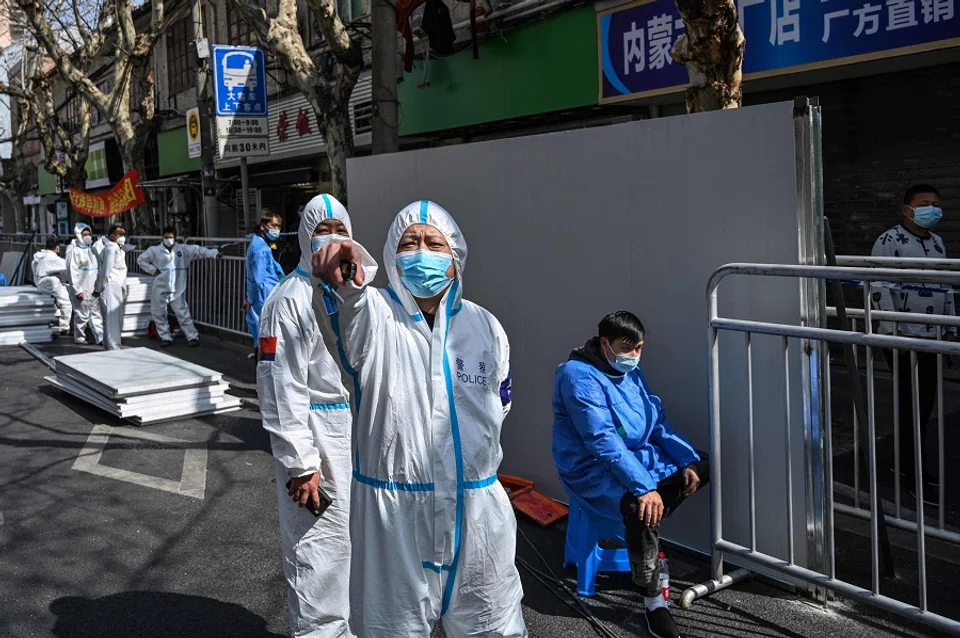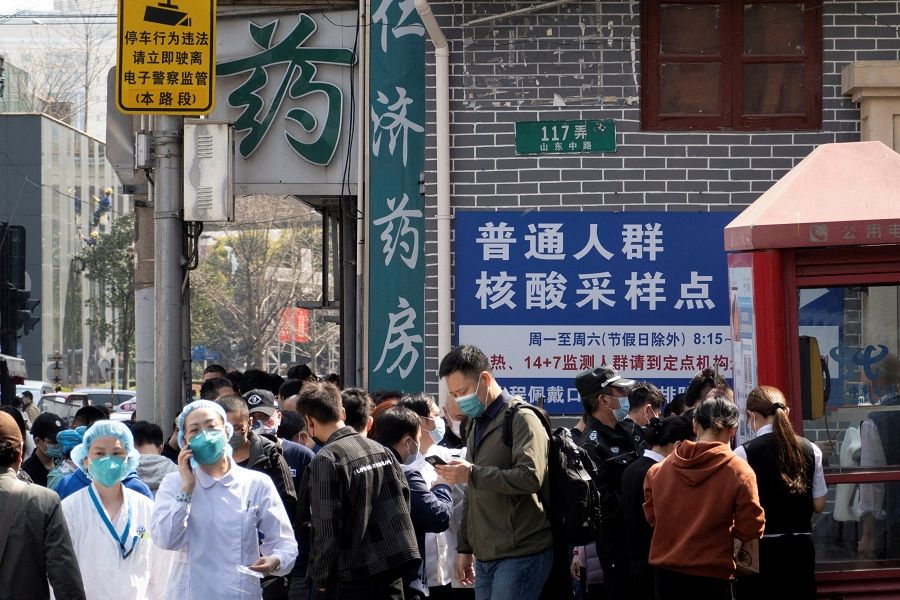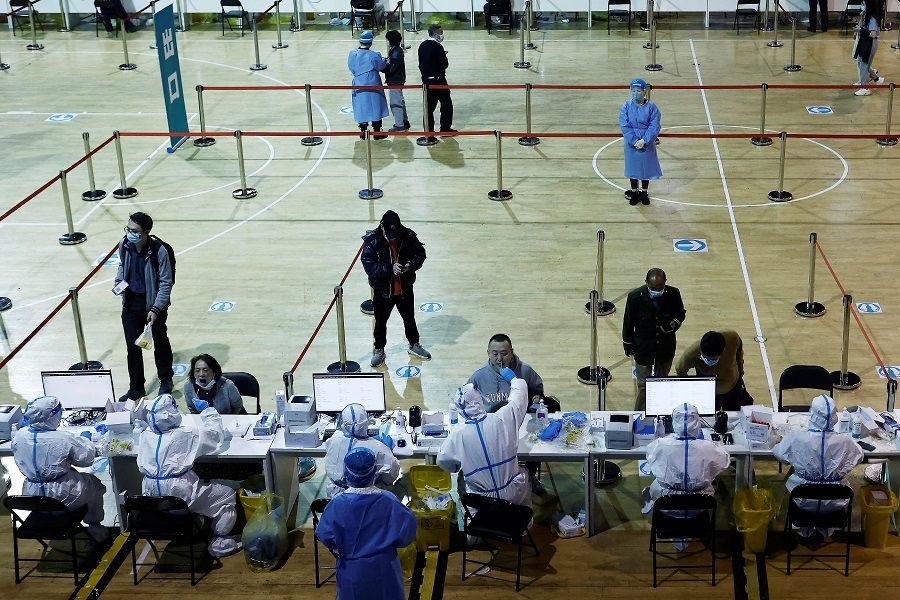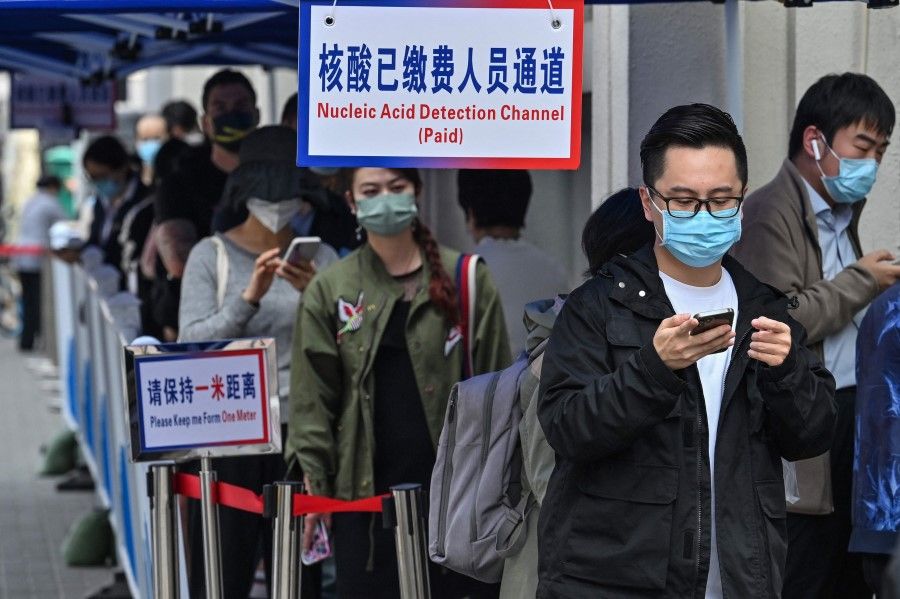As the virus spreads, can China calm its people and contain the outbreaks?

Since March this year, China has been experiencing the worst wave of Covid-19 local outbreaks since it successfully brought the pandemic under control in early 2020. Over 15,000 cases have been reported across the country in about two weeks, with most provinces hit by outbreaks.
Shenzhen has been under a citywide lockdown since 13 March, while the province of Jilin, one of the worst-hit areas, has been under a "provincial-wide" lockdown and is building more makeshift hospitals.
Even Shanghai, which was once hailed as a Covid-19 role model for its "precise outbreak containment measures", is under unprecedented pressure. Several incidents have drawn much public attention, namely, the management oversight at Huating Hotel quarantine centre's leading to a new outbreak, and the scuffle that broke out among medical workers at the Shanghai Sixth People's Hospital.
These remarks signal that for the time being, China will neither choose to live with the virus nor blindly pursue zero-Covid.
Hopes of easing measures
Before China was hit by this latest wave of infections, the world was waiting to see if China would adjust its ultra-strict anti-epidemic policies and move towards living with the virus after the Beijing Winter Olympics.

At the recently concluded Two Sessions (两会, Lianghui) - the annual meetings of the National People's Congress and the Chinese People's Political Consultative Conference - officials repeatedly emphasised the "dynamic zero-Covid" policy when speaking about the pandemic situation. During the Inner Mongolia Autonomous Region delegation's deliberation, Chinese President Xi Jinping also said that the country must guard against "a large-scale epidemic rebound". These remarks signal that for the time being, China will neither choose to live with the virus nor blindly pursue zero-Covid.
On the last day of the Two Sessions, China approved the use of Covid-19 antigen self-test kits commonly used in Singapore, Hong Kong and other areas. A month ago, China's National Medical Products Administration granted "conditional" approval for Pfizer's Covid-19 drug, and some Western media are taking it as a sign that China's anti-epidemic policy is finally easing after over two years of strict containment measures.
However, following the new wave of Covid-19 infections, will China's anti-epidemic policy encounter new obstacles as it moves towards opening up?
'Shanghai model' comes into question
At present, Shanghai's pandemic situation is of particular concern. This city, which comes up top in terms of its "precise outbreak containment measures", has thus far been a role model worthy of emulation.
But after this new wave of Covid-19 infections in Shanghai, this model has come into question, with some netizens even poking fun that the myth of Shanghai's precise outbreak containment measures has been exposed.

Over the past two years, when other regions were still scrambling to adopt one-size-fits-all anti-epidemic measures, Shanghai did not implement full lockdowns or implement Covid-19 tests on a large scale. In January this year, the city was even able to narrow down a medium-risk area to a mere 20-square-metre milk tea store because of its precise outbreak containment measures, winning everyone's applause.
The "Shanghai model" would indeed be a worthy reference if China was going to relax its overall anti-epidemic measures with the view to prevent a large-scale outbreak while minimising social costs. But after this new wave of Covid-19 infections in Shanghai, this model has come into question, with some netizens even poking fun that the myth of Shanghai's precise outbreak containment measures has been exposed.
Shanghai-based renowned infectious disease expert Zhang Wenhong posted on Weibo on 14 March that because of the sudden emergence of the Omicron BA.2 variant, delays in implementing measures, and the fast spread of the virus, Shanghai's precise outbreak containment measures have not been able to catch up and the city is now overwhelmed.

Many people believe that if Shanghai cannot hold out against the virus, then only ultra-strict methods will work. On 15 March, Shanghai authorities said that they would not lock down the city and that there was no need for it. Those who were concerned that the Shanghai model would fail finally breathed a sigh of relief. At least, Shanghai is doing all it can to prevent the community from grinding to a halt, and reducing the impact of anti-epidemic measures on daily life.
If Shanghai can balance controlling the pandemic with economic activity, can it be a model for other areas and prompt China to adjust its ultra-strict anti-epidemic policies?
Reevaluating ultra-strict measures
The policy of fighting the pandemic at all costs is simple - implement lockdowns for one or two months with continuous screenings, and "zero-Covid" can be achieved. This was necessary when the pandemic first broke out two years back, but the pros and cons of the ultra-strict pandemic measures need to be reconsidered, given the increased vaccination rates and the Omicron variant posing a significantly lower hospitalisation risk.
For now, many people are not asking whether the government is able to control the pandemic, but when all these tormenting measures will end.

This current wave is large and widespread, and China is worried that the strict lockdowns are affecting daily movement and risking people's livelihood. For now, many people are not asking whether the government is able to control the pandemic, but when all these tormenting measures will end.
Of course, if China wants to adjust its current anti-epidemic policies, several conditions must be met, such as reaching a certain vaccination rate to minimise the risk of death and severe symptoms; getting the people to accept that patients with mild symptoms do not need hospitalisation, like in other countries; and making sure that medical resources are not overwhelmed if there is another outbreak. After all, big cities like Shanghai are in the minority, due to the highly uneven regional development in China.
The public is still afraid of the virus as there is no official publicity to alleviate their fears. Will the spread of the virus spark panic and in turn cause instability, which the authorities want to avoid?
Officials to lead the way
Besides medical and scientific issues, China also faces a difficult political problem. The public is still afraid of the virus as there is no official publicity to alleviate their fears. Will the spread of the virus spark panic and in turn cause instability, which the authorities want to avoid?
Furthermore, China's pandemic policy has been labelled as a superior system, and any views and approaches that advocate dropping zero-Covid would easily be labelled as "defeatist". Last year, Zhang was put in the spotlight for raising the objective fact that the world needs to learn to live with the virus.

But just as China has come out of more than one difficult situation over the past 40 years, the key to adjusting the current pandemic policy is opening up the mind. And just as in previous years, the confidence to open the mind has to come from the top.
In the lead-up to the 20th Party Congress that will be held in the second half of this year, the authorities have repeatedly emphasised "stability first". Can Beijing shed its psychological burden? How much appetite does it have for the possible instability that would ensue as a result of a large-scale spread of the virus? The answers will determine whether China can adapt while maintaining stability in its pandemic efforts.
Related: Lessons from Xi'an: Why there is no one-size-fits-all solution to Covid-19 | Is China ready to live with the virus? | China needs to break free of its zero-Covid policy. Here's how. | Stability and growth: Two Sessions' government work report spells out what China wants | Elephants in the room: Why China's Two Sessions are a tad dull this year
